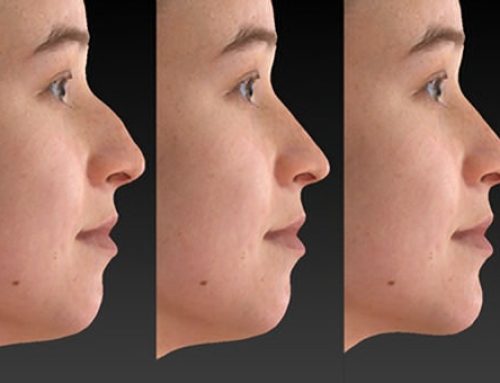What’s New?

As we step into a new era of cosmetic enhancements, facial plastic surgery continues to evolve and adapt to the changing desires and needs of people across the globe. In 2025, the landscape of facial plastic surgery is expected to be significantly influenced by various factors, such as the preferences of Generation X, the rising popularity of drugs like Ozempic affecting facial aesthetics, a growing interest in natural-looking enhancements, advancements in regenerative treatments, and the demand for minimally invasive procedures. Dr. Peter Abramon delves into each of these trends, providing a professional overview of the future of facial plastic surgery.
1. Generation X: The New Affluent Consumers
One of the most significant driving forces behind the plastic surgery industry in 2025 is the increasing interest among Generation X (individuals born between the early 1960s and early 1980s). This demographic has emerged as prominent consumers of facial plastic surgery due to several reasons:
- Desire for Youthfulness: As Generation X ages, they actively seek procedures that can help them maintain a youthful appearance. This may include facelifts, eyelid surgery, and brow lifts.
- Financial Stability: Many Gen Xers are financially stable, which allows them to invest in their appearance without the financial strain that might have accompanied such procedures in the past.
- Cultural Acceptance: With greater societal acceptance of cosmetic surgery, there is less stigma attached to seeking enhancements. Generation X is increasingly comfortable discussing and considering these procedures.
2. The Ozempic Effect on the Face
In recent years, the diabetes medication Ozempic has garnered attention for its weight loss side effects, which can lead to aesthetic changes in users’ faces. Facial Plastic Surgery Trends 2025 in Atlanta shows we can expect this phenomenon to impact facial procedures in the following ways:
- Consultation Demand: Patients experiencing facial volume loss due to significant weight loss from Ozempic may seek assistance to restore their facial contours.
- Chin and Jawline Procedures: As patients may experience a more angular face, 2025 may see a rise in chin augmentation and jawline enhancement procedures to harmonize their facial structure.
- Personalized Treatments: Surgeons will likely focus on tailoring procedures to each individual’s unique facial changes brought on by weight loss medications, leading to more personalized treatment plans.
3. Natural-Looking Enhancements: Facial Plastic Surgery Trends 2025 in Atlanta – The Aesthetic Ideal
As facial plastic surgery continues to evolve, there’s a marked shift towards achieving natural-looking results. Patients increasingly desire subtle enhancements that enhance their features without altering their identities. Key aspects of this trend include:
- Soft Tissue Fillers: Dermal fillers are being used judiciously to restore volume in a way that mimics the natural aging process rather than overwhelming facial features.
- Minimally Invasive Techniques: Procedures like thread lifts and micro-needling are gaining traction, allowing for enhancements with little downtime and minimal invasion.
- Patient Education: As consumers become more informed, they are more likely to request consultations that emphasize natural aesthetics, pushing surgeons to adapt their techniques accordingly.
4. Advancements in Regenerative Treatments
Regenerative medicine is making impressive strides in the field of facial plastic surgery, and by 2025, we expect to see an increase in the use of such innovative techniques. These advancements might include:
- Stem Cell Therapy: Utilizing a patient’s own stem cells to promote healing and rejuvenate tissues, leading to more effective and longer-lasting outcomes.
- Platelet-Rich Plasma (PRP): Commonly used for facial rejuvenation, PRP has the potential to enhance the healing process post-surgery and improve skin texture.
- Biologic Fillers: Increasingly popular for their natural origin, biologic fillers can provide more sustainable alternatives for facial volume restoration.
5. Minimally Invasive Procedures: The Future Standard
As technology progresses, minimally invasive techniques are expected to dominate the facial plastic surgery arena in 2025. This trend is characterized by:
- Less Downtime: Patients now prefer procedures that can yield results with a quicker recovery time, enabling them to return to their routines almost immediately.
- Combination Treatments: Surgeons are increasingly offering combined treatment options—like Botox with laser therapy—to address multiple concerns during a single appointment.
- Cost-Effectiveness: With less downtime and fewer complications, minimally invasive procedures often come at a lower financial burden, making them accessible to a broader audience.
Conclusion
As we look ahead to 2025, the trends in facial plastic surgery reflect an evolving understanding of beauty and self-enhancement. The interest from Generation X, the effects of new medication such as Ozempic, the shift towards natural-looking results, innovations in regenerative treatments, and the preference for minimally invasive techniques are set to redefine the aesthetics landscape. These shifts not only indicate progress in surgical approaches but also a profound change in societal attitudes towards beauty, reinforcing the notion that looking one’s best should feel natural, personalized, and accessible. As these trends become mainstream, the future of facial plastic surgery appears promising and full of potential.
If you would like to see what these trends can mean for you, make an appointment with Peter Abramson, M.D. He will make suggestions that are based only YOU and your individual needs and desires. Call now (404-297-1789) or fill out our contact form.




